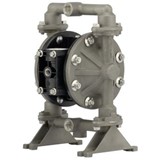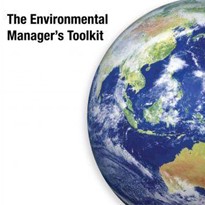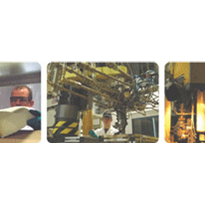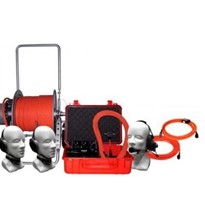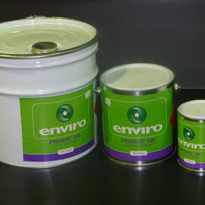Mines with good environmental performance really do have lower operating costs. This is largely due to the fact that mines that excel in environmental management also excel in all other aspects of their operation's management. It makes sense that good environmental performance is invariably the result of sound management practices.
The second reason is that sustainability forms a vital component of sound environmental management practices. Simply put, sustainability is staying in business. Sustainability is producing more output from less input. Examples of inputs include energy, fuel, labour, land and waste disposal. Outputs include production, profit, reduced air and water emissions, a highly skilled workforce, supportive local community and minimal impact on the local environment.
It's challenging to understand the full scope of sustainability and the relationship this has to sound environmental management, but the two go hand-in-hand to produce lower cost mining operations.
Achieving good environmental performance
There are a range of actions that mines must take to ensure sound environmental management. Firstly, they need recognise the need to address the Triple Bottom Line. The Triple Bottom Line is the expectation that Australian listed companies report annually on:
- Financial Performance
- Social Performance
- Environmental Performance.
Financial Performance is the traditional measure of a listed company – to make a profit for the shareholders. In the past, this was seen as the only legitimate reason for a company to exist. Clearly, it's still important. The second two objectives can't be achieved if a company's not making a profit.
Social Performance deals with the interface between its stakeholders. It includes:
- Investment in staff through good Occupational Health and Safety practices (OH&S)
- Employee training, such as apprenticeships
- Investment in the local community to recognise that the mine is part of the community
- Partnerships with suppliers and other stakeholders.
Environmental Performance focuses on the relationship between the organisation and the natural environment, in particular the impact of the mine operations on the natural environment. Corporations have to meet community expectations about their impact on the local ecosystem. These expectations may exceed the requirements of the various relevant government authorities. Corporations' projects or activities have been stopped or modified even when they have government approval – this is often called the 'community licence to operate'.
The maintenance of your 'community licence to operate' is crucial to your ongoing operation. It requires a sound and robust Environmental Management System (EMS), which includes the ability to respond to major environmental emergencies.
When disaster strikes
A major aim of your EMS is to avoid a major environmental incident that can give rise to community outrage. This type of incident is often characterised by a media maelstrom that escalates to a point where governments take punitive action, which may have otherwise been avoided. The impact of such crises can be polarising and greatly damaging to stakeholder relationships. It can lead to fines, production stoppages and loss of goodwill. And of course, loss of profit.
While avoiding an incident is the primary goal, it's still important to have a plan in place should disaster occur. These are some of the steps you can take:
- Document in the EMS who will be in charge of a major environmental incident.
- Drill your team annually for a simulated major environmental emergency. This is law in New South Wales for those sites holding environmental licences.
- Document a communication strategy in the event of a major environmental incident. In particular, nominate a spokesperson to be the sole contact with the media. Make sure all other employees are instructed not to discuss incidents outside the organisation.
- Notify your relevant authority as soon as you become aware of the incident. The aim is to make sure the authority hears it from you first. You may not know all the facts surrounding the incident, but it's crucial to provide the initial notification immediately.
- Start your response to mitigate the incident. Don't wait to be told by authorities. A brief written statement can be prepared for key staff, detailing the known facts.
- Brief the nominated media spokesperson.
- Preferably have a communications officer field calls before then referring media enquiries to the nominated media spokesperson, particularly if the spokesperson is also at the coalface. Continue to update authorities, while monitoring media coverage. Silence is not a preferred option.
- Hold onto your hat!
Special Feature
A well-executed communication strategy can work spectacularly well. The Beaconsfield Mine disaster is a good example. Here, two trapped miners became objects of intense media interest. The mine manager was the nominated media spokesperson, as well as being directly in charge of the rescue operations. He scheduled two press conferences – one in the morning and one in the afternoon – each day. He managed to retain tight control of messaging to ensure only the correct information reached media and won high praise as a result.
The second example of an effective communication strategy was a Qantas incident where an Airbus A380 had an unconfined engine failure upon departure from Singapore. Qantas' CEO was informed of the incident well before the aircraft had landed. He announced the entire A380 fleet would be immediately grounded until they identified and rectified the engine's failure cause. The speed and decisiveness of this announcement served to enhance the high reputation Qantas has earned for safe operations. Of course, the Qantas crew's professionalism in landing a severely damaged aircraft also reinforced this reputation.
The principles involved in managing an effective communication strategy are the same, no matter what the industry. Media have a job to do and if you don't provide a clear, single accessible source of information, they will seek out other sources that may not be accurate or helpful, particularly with today's multiple social media channels.
Creating an effective Environmental Management System
Remember that the EMS is a structured system or management tool to help an organisation to reduce its negative impacts on the environment and improve its environmental performance. It's a management system like many others, such as safety and quality. The major components are:
- An Environmental Policy which is accessible to the public
- Identification of goals, objectives, performance criteria and targets together with plans for achieving these
- Involvement of internal and external stakeholders in the ongoing development and review of the EMS
- Integration of environmental management into organisational planning and investment strategies
- Adequate resourcing to achieve desired environmental outcomes and EMS implementation
- Clearly defined responsibilities, authorities and accountabilities
- Training programs to provide employees with knowledge, skills and competencies required to achieve environmental targets and outcomes
- Detailed work practices, procedures or processes to manage and reduce the environmental impact of the organisation
- Regular monitoring of environmental performance and EMS implementation
- Internal and third-party audits of progress in achieving desired environmental outcomes and EMS implementation
- Development of reporting systems to include regular environmental reporting internally and externally to stakeholders and reporting against performance indicators
- Regular review and continuous improvement of the EMS and the organisation's environmental performance.
No doubt the vast majority of mines already have an EMS that ticks all of the above boxes. So why don't we have better environmental performance?
Firstly, the EMS is not simply a document that sits on the shelf or in a computer file. To have any effect, it has to be a living, breathing company value. The 'alive' evidence is found in:
- Environmental incident reporting
- Follow up and rectifying issues that caused the incident
- Conducting audits to identify non-conformances
- Routine environmental training.
This evidence proves you and your mine have a working EMS. In the event of a major environmental incident, you may be required to prove in court that these tasks have actually been done. This is called due diligence.
Due Diligence
Due diligence is more than simply doing the right thing. It is being able to prove, in court if necessary, that all these tasks, plus many more, have been done. You need to be able to produce this due diligence evidence to prove you and your mine have behaved in a reasonable manner. This test is called the Reasonable Person Test. This is the major defence in the event that you, or the mine, are prosecuted.
If you can prove that you, via the EMS and due diligence evidence, took all reasonable measures prior to the major incident occurring, then you've reduced the likelihood of being found guilty, or even prosecuted.
Corporate Culture
Culture within an organisation has a powerful influence on the effectiveness of an EMS. Senior management sets the culture of any organisation. Mining culture has an international flavour given the global reach of major mining companies, however, the communities in which each mine operates have local cultural expectations of the local mine which will be unique. This cultural difference demands respect to avoid putting at risk your 'Community Licence to Operate'.
Environmental Training
The EMS for a mine usually details the expectations that each employee will contribute to the environmental performance of the mine in a positive way. In addition, each employee has a personal Environmental Duty of Care. Most employees are unaware they have this legal obligation. The only way to improve environmental awareness is through training. Basic environmental training only needs to cover a few fundamental issues. These are:
- The Law – every Australian citizen has an Environmental Duty of Care
- The Law – every Australian employee has a Duty to Notify their employer if they become aware of an environmental incident (otherwise penalties can personally apply)
- Always report environmental incidents to your supervisor
- Respond to environmental incidents if safe to do so (especially liquid spills)
- Always segregate waste into the correct containers.
The good news is that most employees want to do the right thing by the environment. They just don't know what that means in their job and workplace.
There is a range of higher level nationally recognised training available to equip frontline supervisors, HSE officers and environmental officers. These have been shown to provide significant improvements in environmental performance.
A recent example of this is a major Australian company that was experiencing an increasing number of environmental prosecutions. These had reached an intolerable 20 incidents per year. The response was to convert the 55 dedicated Health and Safety officers to HSE officers (using the Cert IV of Environmental Management). The result was a decrease to a single incident the following year. This illustrates the impact of increasing the focus on environmental management without increasing staff numbers using appropriate training.
Environmental penalties & the 'iceberg effect'
Environmental prosecutions have traditionally been rare and subsequent penalties have been low in the past. There is now a marked trend to increase prosecutions and penalties.
A recent non-mining case highlighted the potential increase in cost. In this case, a manufacturing plant accidentally released a chemical to air, which impacted local residents. The resulting media feeding frenzy resulted in the State Government closing the factory for six months until they could demonstrate that the incident wouldn't happen again. The reported loss of profits was $50 million from the shutdown alone. The resulting fine was below $1 million. The company also suffered damage to their reputation, despite the fact this is more difficult to put a dollar figure on.
This case highlights the true cost of an environmental incident can be much more than the fine. I call this the "iceberg effect". Less than 10 per cent of an iceberg floats above the surface of the sea. The other 90 per cent is hidden.
This is also true for the cost of environmental incidents that result in prosecution. We normally only see reported the actual fines and other penalties that have been applied to prosecuted companies. This is less than 10 per cent of the total costs. Other costs include clean-up, upgraded plant to prevent re-occurrence, staff time to brief lawyers, and finally but not least, legal costs. Other noncash costs are reputation damage, which can impact the company's long-term viability.
Profitable companies are sustainable companies
Best practices are orchestrated components of good businesses. It's overwhelmingly evident that sound environmental management is an investment that provides high dividends to a mine's bottom line, but also immeasurable benefits to you and your company's reputation.
"A well-executed communication strategy can work spectacularly well. The Beaconsfield Mine disaster is a good example."
"Due diligence is more than simply doing the right thing. It is being able to prove, in court if necessary, that all these tasks, plus many more, have been done."


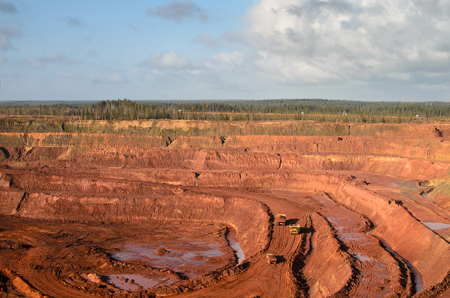





-160x160-state_article-rel-cat.png)
-160x160-state_article-rel-cat.png)


